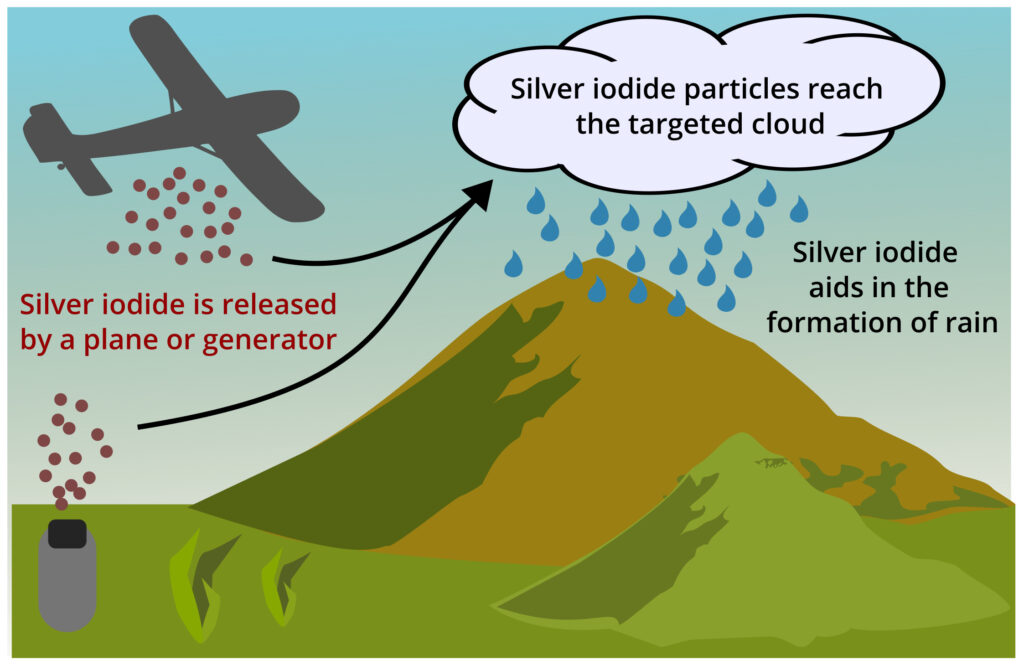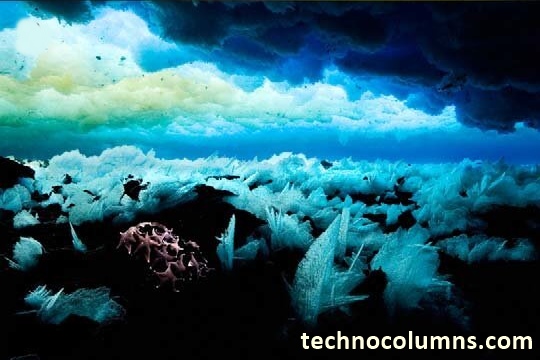Artificial Rain
Introduction
Cloud seeding, the process of making artificial rain, represents a fascinating connection of weather prediction, atmospheric science, and technology. This weather modification technique, developed over several decades, involves the intentional introduction of seeding agents into clouds to stimulate the formation and enhancement of precipitation, whether in the form of rain or snow. The goal is to capitalize on existing atmospheric conditions and push the natural process of cloud concentration towards precipitation. In this complete exploration, we investigate into the intricacies of cloud seeding, examining its methods, mechanisms, environmental considerations, controversies, and the ongoing search for a deeper understanding of its effectiveness.
Identifying Suitable Clouds:

At the heart of cloud seeding lies the art of cloud identification. Meteorologists rely on a suite of tools and technologies to pinpoint clouds with the potential for rainfall. Weather radar and satellite imagery provide invaluable insights into cloud characteristics, moisture content, and atmospheric dynamics. Clouds that show the right balance of moisture but lack the necessary particles for rain become prime candidates for artificial rain operations.
Aircraft or Ground-Based Dispersion:

The next step involves the deployment of seeding agents into the identified clouds. This can be achieved through two primary methods: aerial dispersion using aircraft or ground-based generators. Aerial cloud seeding typically employs specially equipped aircraft that fly directly into the target cloud. These aircraft release seeding agents, such as silver iodide or potassium iodide, directly into the cloud. Alternatively, ground-based producers release rain agents into the lower atmosphere, allowing them to be carried upward into the cloud by the natural upward movement of air.
Introduction of Seeding Agents:

Silver iodide and potassium iodide are commonly used seeding agents due to their crystal structure, which mimics that of ice. These substances act as ice nuclei, providing a surface for water droplets to freeze upon. In the case of supercooled water droplets—those that remain in liquid form below the freezing point—introducing seeding agents facilitates the freezing process.
Ice Crystal Formation:

The introduction of seeding agents initiates the formation of ice crystals within the cloud. As water droplets stick to the seeding agents and freeze, ice crystals begin to take shape. These emerging ice crystals represent the building blocks of rain.
Collision and Combination:

The journey towards precipitation continues as the growing ice crystals go aboard on a collision course with supercooled water droplets within the cloud. Upon collision, these droplets freeze onto the ice crystals, contributing to their growth. This process of collision and combination is crucial for the development of larger particles capable of overcoming air resistance.
Precipitation Formation:

As the ice particles grow in size, they eventually become heavy enough to overcome atmospheric resistance and begin their downward movement as rain. The nature of the precipitation—whether rain or snow—depends on the temperature conditions at different altitudes. If the temperature is above freezing at lower altitudes, the result is rain. Conversely, if temperatures are below freezing, the rain takes the form of snow.
Monitoring and Evaluation:

Meteorologists closely monitor the seeded clouds and the ensuing precipitation using an array of sophisticated instruments and remote sensing technologies. This ongoing evaluation serves multiple purposes, including assessing the success of the cloud seeding operation and refining techniques for future use. Severe monitoring is crucial for understanding the gradations of cloud behavior and precipitation patterns.
Environmental Considerations:

The deliberate manipulation of weather patterns raises legitimate environmental concerns. While cloud seeding aims to address water scarcity and enhance water resources, its potential impact on ecosystems, air quality, and water quality cannot be ignored. Researchers are actively investigating the long-term environmental impacts of artificial rain to make sure that the benefits are more than any potential disadvantages.
One of the concerns is the unplanned introduction of foreign substances into the atmosphere and water bodies. Silver iodide, a commonly used seeding agent, is generally considered safe in small quantities. However, the swelling effects of widespread and repeated use warrant careful examination. Studies are ongoing to understand the dispersion, transformation, and potential ecological impact of these substances.
Effectiveness and Controversies:

The effectiveness of cloud seeding remains a topic of ongoing research and debate within the scientific community. While some studies and circumstantial evidence suggest positive outcomes, the statistical significance of these results is a subject of examination. Factors such as cloud type, atmospheric conditions, and local landscape can influence the success of artificial rain operations.
Critics argue that attributing changes in precipitation solely to cloud seeding is challenging due to the inherent variability of weather systems. Statistical methods must account for natural variability to discern whether observed changes are indeed a result of cloud seeding or simply natural fluctuations. Despite decades of research and numerous field experiments, consensus on the plain effectiveness of cloud seeding has proven indefinable.
Legal and Ethical Considerations:

Cloud seeding activities are subject to a regulatory framework to ensure responsible and ethical practices. Obtaining the necessary permits and adhering to guidelines are essential components of cloud seeding operations. The legal landscape also extends to addressing potential cross-border impacts, as weather systems do not adhere to geopolitical boundaries.
Transparency is a key ethical consideration in cloud seeding. Open communication with the public and participants helps build trust and understanding. This is particularly important given the potential far-reaching consequences of weather change activities. Public awareness and participation in decision-making processes contribute to responsible and accountable artificial rain practices.
Conclusion
In conclusion, artificial rain through cloud seeding is a multifaceted process that navigates the realms of science, technology, and environmental stewardship. From the identification of suitable clouds to the introduction of seeding agents, the journey towards precipitation is complex and dynamic. Ongoing research, monitoring, and ethical considerations are paramount as we seek to harness the power of cloud seeding for sustainable water resource management while safeguarding the delicate balance of our ecosystems. The quest for a comprehensive understanding of cloud seeding continues, driven by the need for effective solutions to water scarcity challenges in a changing climate.

